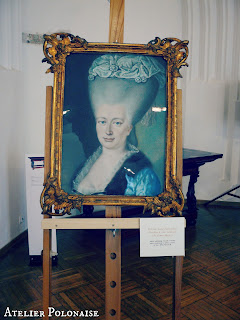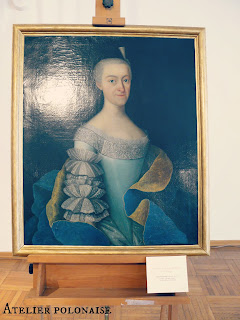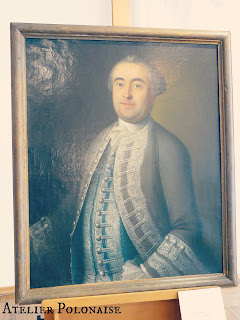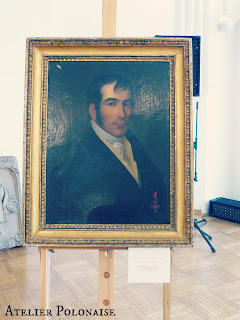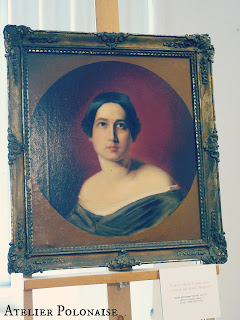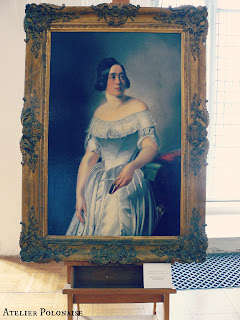Dzisiaj wspomnę o pewnej wystawie która miała miejsce w zeszłym roku w
Salzburg Museum.
"Die Kunst zu wohnen. Raumdesign im Rokoko, opowiada o pewnym zbiorze -albumie przedstawiającym wnętrza XVIII wiecznego domostwa bogatego patrycjusza i złotnika w Augsburgu - Corneliusa Kocha. Album zadziwia kolorami, które nie wyblakły przez co można wyczuć estetykę wnętrz tamtych czasów. Album datowany jest na lata 1780 - 1786. Karty albumu wykonane zostały w różnych technikach, częściowo atramentem i akwarelami ale też nie brakuje technik jak decoupage czy scrapbooking. Karty wykonane tą techniką są chyba najcenniejsze bo wyklejone zostały także fragmentami tkanin czy papieru z osiemnastego wieku.
W czerwcowym numerze z 2013 roku
The World Interiors ukazał się artykuł (
A Cabinet Curiosity) o albumie oraz zamieszczono kilka dobrej jakości zdjęcia.
On the occasion of the exhibition catalog was issued under the same title ( A cabinet Curiosity). In the June issue of The World Interiors published an article about the album and contains some good quality photos.
Today, I mention about the interesting exhibition that took place last year in Salzburg Museum. "Die Kunst zu Wohnen. Raumdesign the Rococo, talks about some set-album showing the interior of the eighteenth century a wealthy patrician houses and goldsmith in Augsburg - Cornelius Koch. Album amazing colors that are not faded so you can feel the aesthetics of the interior at the time. Album is dated for the years 1780-1786. Cards were made in different techniques, some ink and watercolors but also no shortage of techniques such as decoupage and scrapbooking, made with this technique are probably the most valuable because they are also glued pieces of fabric or paper from the eighteenth century.
On the occasion of the exhibition catalog was issued under the same title ( A cabinet Curiosity). In the June 2013 issue of The World Interiors published an article about the album and contains some good quality photos.
 |
| child room, pokój dziecięcy, source |
Album przedstawia więc jadalnię, 5 salonów ( zielony, biały, kobiecy, muzyczny i herbaciany), 5 sypialń (wyróżniono w tym sypialnię dla służących, macierzyński oraz dziecięcą. oraz 5 pokoi dla gości czy dla organizowania przyjęć oraz zapierającą dech kuchnię. Wszystkie wnętrza przedstawione zostały z meblami, tapetowanymi ścianami oraz podłogą wyłożoną kafelkami. Postacie są zbyt małe w stosunku do wnętrza ale nie zmienia to faktu, że autor miał szaloną wyobraźnię tworząc taki album. Warto także zwrócić uwagę na niezmiernie dokładne detale, jak obrazy na ścianach, klamki od drzwi czy formy do ciasta wiszące na ścianie kuchni.
Album now provides a dining room, five salons (green, white, ladies, music, and tea), 5 bedrooms (including a bedroom for the maids, maternity room and for child), five rooms for public spaces and halls and breathtaking kitchen. All the interiors presented been with furniture, wallpapers walls and tiled floors. Characters are too small for the inside but does not change the fact that the author had a wild imagination, creating the album. Should also pay attention to the extremely accurate details such as paintings on the walls, door handles from doors and mold cakes hanging on the kitchen wall.
 |
| A fragment of woman room, pokój kobiecy, source |
Uwagę zwraca trójwymiarowość, do ramy drzwiowej przyklejono papier, który imituje otwarte drzwi a w dalszej perspektywie widać panią w ślicznym caraco ( kolory są zabójcze)
Attention is drawn three-dimensionality to the door frame glued paper that mimics the open door and eventually you can see the lovely caraco.
 |
| A view of Augsburg (fragment), widok Augsburga (fragment) source |
Widok miasta przypomina mi Gdańsk a cały album nasuwa mi na myśl Dom Uphagena. Z okazji wystawy wydano
katalog pod tym samym tytułem. W czerwcowym numerze
The World Interiors ukazał się artykuł o albumie oraz zamieszczono kilka dobrej jakości zdjęć.
View of the city of Augusburg reminds me of old Gdańsk and the whole album reminds me of the House of Uphagen. On the occasion of the exhibition catalog was issued under the same title. In the June issue of The World Interiors published an article about the album and contains some good quality photos.



